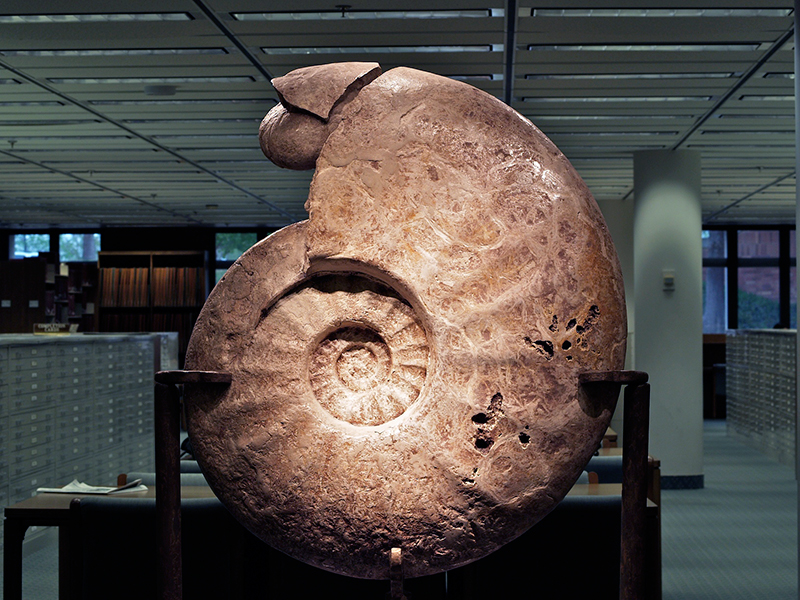(and NAUTILOID)
Locality: northeast of Monclova, Coahuila, Mexico
Geologic Range:
Subclass Ammonoidea
Ammonite - Ordovician to Cretaceous
(500 - 63 million years ago)
Subclass Nautiloidea
Nautiloid - Cambrian to present
(600 million years ago to present)
Approximate Age of Specimens:
Cretaceous (100-80 million years ago)

Description:
Class Cephalopoda: Ammonites and nautiloids are four-gilled cephalopods with an external shell divided into chambers by transverse plates or septa. The animal lives in the outer-most chamber. Most fossil forms have well-developed shells, which may be external or internal, and may be coiled in various ways. These highly developed marine mollusks are represented today by the pearly nautilus, octopus, and squid. Subclass Ammonoidea (ammonites) are characterized by a thick, strongly ornamented shell that is symmetrical and coiled in a plane. It has intricate sutures with finely divided lobes and saddles. The ammonites did not survive the great extinction at the end of the Cretaceous Period, as did the nautiloids. Subclass Nautiloid (nautiloids) are characterized by a centrally located siphuncle and by a straight, curved, or coiled chambered external shell with simple sutures.
An interesting and unique aspect of this large specimen is the occurrence of the nautiloid and ammonite together, suggesting synchronous deposition and subsequent fossilization. The specimen was collected from the San Felipe Formation, which is equivalent to the upper Austin Formation of Texas. As identified by Dr. Keith Young, Professor Emeritus, University of Texas-Austin, this ammonite is probably Parapuzoisia boesei of Early Campanian Age (Upper Cretaceous).